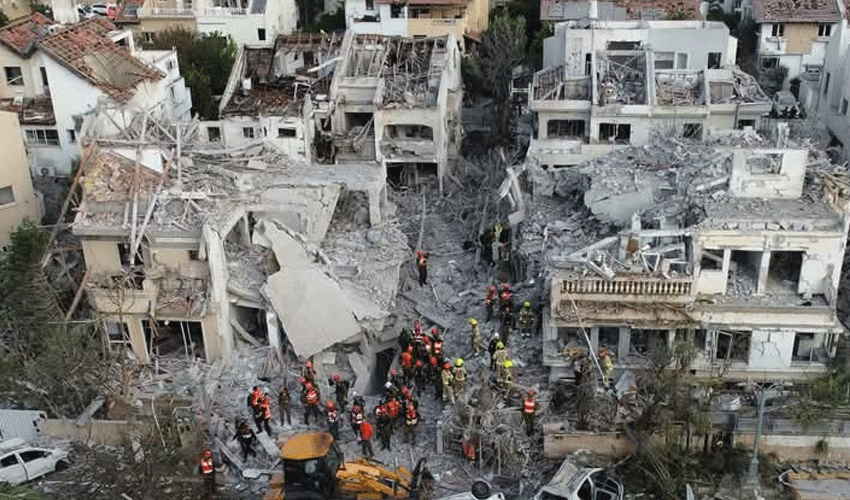Iran on Saturday launched a fresh barrage of ballistic and hypersonic missiles at Israel, in what officials described as the fifth phase of its retaliatory operation dubbed ‘True Promise 3’. This action further escalates an already volatile conflict between the two arch-rivals.
According to Iranian media and foreign news agencies, the latest round of missile strikes targeted multiple Israeli cities, including Tel Aviv and Haifa, where eyewitnesses reported loud explosions. Warning sirens were activated across northern parts of occupied Palestine, instructing residents to seek shelter.
Iran’s state-affiliated Mehr News Agency, citing Israeli outlets, claimed that a 50-story building in Tel Aviv sustained significant damage, while dozens of missiles and drones bypassed Israel’s air defense systems and reached critical infrastructure. Iranian authorities declared that “no part of Israel will be safe” as the retaliatory campaign unfolds.
The Israeli Defense Forces (IDF) confirmed that their air defenses were activated in response to the incoming projectiles and reiterated instructions for the public to seek shelter. However, reports suggest that several missiles penetrated the Iron Dome and David’s Sling defense layers.
The missile salvos, which commenced late Thursday night and extended into Friday morning, reportedly resulted in at least four Israeli fatalities—including one woman—and over 90 injuries, according to AFP and Al Jazeera. Emergency medical services in Israel stated that seven individuals sustained minor injuries in Tel Aviv. Authorities have imposed a ban on filming the destruction caused by the Iranian strikes.
In a separate development, Iran’s state-run Tasnim News Agency claimed that two Israeli warplanes were shot down by Iranian air defense systems, and a female pilot was captured during the operation. These claims could not be independently verified, and the IDF has not issued a comment on the matter.
Friday’s strikes mark the fifth wave of retaliatory fire since Israel launched a pre-dawn attack on Iran on June 13, which reportedly killed several senior Iranian officials. Among those martyred were Major General Mohammad Baqeri, the Chief of Staff of Iran’s Armed Forces, and Major General Hossein Salami, the head of the Islamic Revolutionary Guard Corps (IRGC), along with six nuclear scientists. Iranian media stated that at least 78 civilians, including women and children, were also killed.
The Israeli assault, targeting nuclear and military facilities, was described by Iran as “the largest coordinated strike on Iranian soil in recent history.” The attack has drawn condemnation from Iranian leadership, with Supreme Leader Ayatollah Ali Khamenei declaring that Israel had “sealed its bitter and painful fate” by striking Iranian territory.
Meanwhile, international observers and media outlets, including CNN and Reuters, have confirmed that hundreds of missiles have now been exchanged between the two countries in recent days, raising concerns over a wider regional conflict.
Israel’s police have stated that while many missiles were intercepted, those that landed caused property damage in residential areas of Tel Aviv and Haifa. “At this stage, four fatalities have been confirmed, and more than 90 people have been injured. Property damage is extensive,” a spokesperson said.
In contrast, Iranian officials maintain that their actions are purely retaliatory, aiming to hold Israel accountable for violating their sovereignty and killing key national figures. The Iranian government asserts that its strikes have been directed at both military and critical infrastructure targets inside Israel.
Despite the escalating hostilities, no official comment has been made by the United States or the United Nations at the time of filing this report. However, analysts warn that the situation risks spiraling into a broader Middle Eastern war unless immediate diplomatic interventions are made.
The Israeli cabinet is reportedly holding emergency meetings, while public events in major cities have been cancelled. On the Iranian side, state television aired footage of military personnel mobilizing and defense systems on high alert across key provinces.



